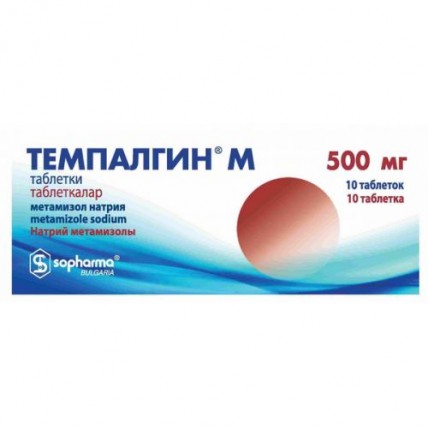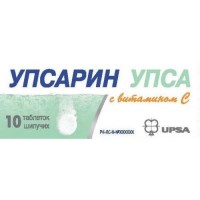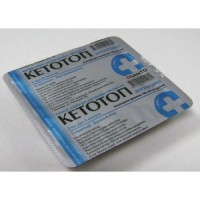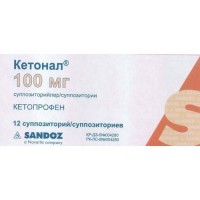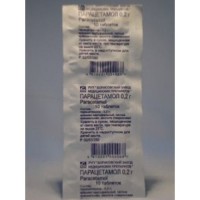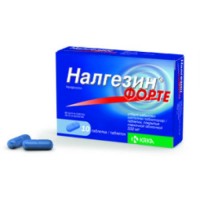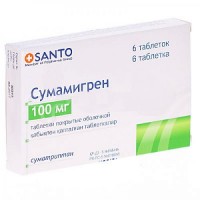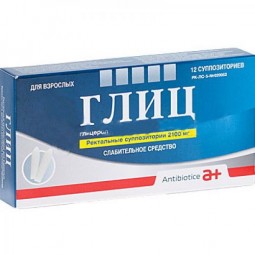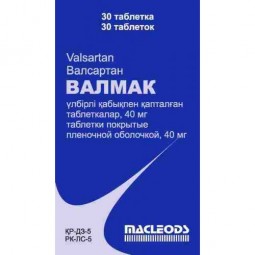M Tempalgin 500 mg (10 tablets)
- $3.90
The instruction for medical use of Tempalgin® medicine M the Trade name of Tempalgin® of M the International unlicensed name Metamizole Sodium Dosage Form of the Tablet of 500 mg Structure One tablet contains active agent - metamizole sodium monohydrate (in the form of 100%) 500 mg, excipients: wheat starch, cellulose microcrystalline (type 101), K 25 povidone, talc, magnesium stearate. The description of the Tablet of round shape, with a flat surface, white or almost white color, with risky on one party. Pharmacotherapeutic group Nervous system. Analgetics. Other analgetics and antipyretics. Pyrazyl ketones. Metamizole sodium. ATH N02BB02 code Pharmacological Pharmacokinetics Absorption properties. After oral administration, metamizol is hydrolyzed in digestive tract. Active metabolites are 4-methyl-amino-antipyrine (MAA) and 4-amino-antipyrine (AA). MAA is characterized by a fast and full resorption. The maximum plasma concentration is reached within 1-2 hours. The bioavailability of MAA is about 90%. Food does not influence metamizol pharmacokinetics. Distribution. Contacts in 50-60% plasma proteins. Gets through a blood-brain and placental barrier. Distribution volume - about 0.7 l/kg. Metabolism. Metamizol is exposed to intensive biotransformation in digestive tract and a liver. Its main metabolite, 4-methyl-amino-antipyrine, is metabolized in a liver to other metabolites, inclusive to 4-amino-antipyrine (AA) which pharmacological is active. Removal. It is removed with urine in the form of metabolites, and only 3% of the marked-out amount of metamizol are in not changed look. Patients with hepatic disturbances: Elimination half-life of an active metabolite of MAA at patients with hepatic disturbances lasts approximately three times. Treatment is recommended to these patients by lower doses of metamizol. Patients with renal disturbances: At patients with the broken renal function the lowered extent of elimination of some metabolites is observed. Treatment is recommended to these patients by lower doses of metamizol. The pharmacodynamics Metamizole sodium is analgetic from group of pyrazyl ketones with the significant analgetic and febrifugal action. Has more mild anti-inflammatory activity, as well as weak spasmolytic action. The main mechanism of its action consists in slowing down of synthesis of prostaglandins by cyclooxygenase suppression. Stimulates release of beta endorphins, lowers the level of endogenous pyrogens and influences directly the thermoregulatory center in a hypothalamus. Indications - for removal of a pain syndrome of weak and average intensity of various origin - the feverish syndrome resistant to other therapy. The route of administration and doses the Dosage the Dose depends on intensity of pain or extent of temperature increase and on individual sensitivity to metamizol. Adults and teenagers are more senior than 15-year age (& gt, 53 kg of weight) On 250-500 mg 2-3 times a day. The maximum single dose - 1 g. The maximum daily dose - 2 g. Patients are more senior than 65 years Usually reduction of a dose is not required. At patients with age disturbances of renal and hepatic function the treatment should be carried out, applying ½ recommended doses to adults for a short span (see the section Pharmacokinetics). Patients with an abnormal liver function At these patients the increase in elimination half-life of metabolites of metamizol is possible (see the section Pharmacokinetics). At patients with moderate or severe damages of a liver the treatment of ½ recommended doses for adults is recommended. Patients with a renal failure Metamizol and its metabolites are brought by kidneys (see the section Pharmacokinetics). At patients with defeat of function of kidneys treatment by metamizol it is necessary to carry out ½ recommended doses for adults. Treatment duration Treatment by metamizol should not continue more than 3-5 days. Its use for longer span or in higher doses, than specified, is possible only after consultation with the attending physician. Side effects Side effects are classified by frequency. Frequency is determined by MedDRA as follows: very frequent (& gt, 1/10), frequent (& gt, 1/100 to & lt, 1/10), infrequent (& gt, 1/1,000 to & lt, 1/100), rare (& gt, 1/10,000 to & lt, 1/1,000), very rare (& lt, 1/10,000), with an unknown frequency (on the basis of the existing data it is impossible to make assessment). Infrequently: - a dieback - palpitations, tachycardia, cyanosis, disturbance of a warm rhythm, arterial hypotension Seldom: - a proteinuria, an oliguria, an anury, a polyuria, interstitial nephrite, coloring of urine in red color (at the expense of a metabolite – rubazonovy acid) - a leukopenia - paresthesia, sonitus, a disorder of vision, a tremor, a depression - makulopapulezny rash, anaphylactic or anaphylactoid reactions. Such reactions can come during introduction or directly after it, but can appear also in several hours. Usually they come mainly for the first hour after use. Easier reactions are shown by typical reactions from skin and a mucous membrane (for example, an itching, burning, reddening, urticaria, hypostases), dispnoe and is rare - complaints from digestive tract. Such easier reactions can pass into more severe forms with generalized urticaria, a heavy Quincke's disease (including laryngeal), a heavy bronchospasm, disturbances of a warm rhythm, lowering of arterial pressure (sometimes with the previous increase in arterial blood pressure). For this reason at emergence of skin reactions the use of metamizol should be stopped immediately. Very seldom: - an asthmatic attack (at patients with analgetic asthma), Stephens-Johnson or Layell's syndrome, an acute anaphylaxis - an agranulocytosis, thrombocytopenia, hemolytic anemia, aplastic anemia. The risk of appearance of an agranulocytosis cannot be provided. The agranulocytosis can develop also at patients at whom metamizol was applied in the past without emergence of side effects. The risk of appearance of an agranulocytosis increases at prolonged use (more than 1 week) of metamizol. With an unknown frequency: - nausea, vomiting, anorexia, abdominal pain and discomfort, in rare instances ultseration and bleeding. If any of side effects becomes serious, administration of drug needs to be stopped immediately. The patient has to notify the doctor or the druggist if noticed other, undescribed side effects in this instruction. Contraindications - hypersensitivity to metamizol or any of excipients - hypersensitivity to other derivatives of pyrazyl ketone (incl. at patients with the anamnesis of an agranulocytosis, after the previous use of such substances) - a sharp hepatic porphyria - insufficiency glyukozo-6-fosfatdegidrogenazy (hemolysis threat) - a serious illness of a liver and/or kidneys - dysfunction of marrow (for example, after treatment by cytostatics) or diseases of a gematopoyetichesky system (aplastic anemia, an agranulocytosis, a leukopenia), an infectious neutropenia - the bronchospasm, bronchial asthma, a small tortoiseshell, acute rhinitis connected with use of NPVS - pregnancy and the period of a lactation - children's age up to 15 years. Medicinal interactions Coumarinic anticoagulants. At simultaneous use, metamizol can reduce activity of coumarinic anticoagulants as a result of induction of enzymes. Chlorpromazinum and other derivatives of a fenotiazin. At simultaneous use with metamizol there is a risk of emergence of a heavy hypothermia. Cyclosporine. Metamizol lowers plasma levels of cyclosporine at simultaneous use. Chloramphenicol and other myelotoxic drugs. At combined use with metamizol there is an increased risk of emergence of suppression of marrow. Inductors of microsomal enzymes (barbiturates, glutetimid, phenylbutazone) can weaken effect of metamizol. Central nervous system depressants (benzodiazepines, neuroleptics, opiates) at a combination with metamizol strengthen its analgetic action. At simultaneous use with other analgetics-antipyretics and NPVS perhaps mutual strengthening of toxic effects. Effect of tricyclic antidepressants (Psychoforinum, amitriptyline), oral contraceptive means, analgetics, Allopyrinolum and alcohol is exponentiated at simultaneous use with metamizol. Derivatives of pyrazyl ketone are known that can interact with captopril, lithium, a methotrexate and Triamterenum, as well as to change efficiency of antihypertensive drugs and diuretics. To what degree metamizol leads to these interactions, it is not known. At simultaneous use the effect of oral hypoglycemic drugs, glucocorticosteroids, owing to their replacement from communication with blood proteins under the influence of metamizol amplifies. X-ray contrast substances, colloidal blood substitutes and penicillin should not be applied during treatment by metamizol. The special instructions Treatment by metamizol it is carried out only for a short span or in cases when the expected advantage exceeds risk of emergence of side effects, or not other alternative method of treatment. There is a small, but zhizneugrozhayushchy risk of emergence of an acute anaphylaxis and an agranulocytosis at metamizol use (see the section Side effects). Development of an agranulocytosis does not depend on a dose and it cannot be provided. Can come after the first reception or after repeated use. Typical symptoms of an agranulocytosis are fever, a sore throat, painful swallowing, inflammation of a mucous membrane of a mouth, nose, a farinks, anorectal and genital area. At sudden deterioration in the general state and emergence of symptoms of an agranulocytosis, treatment by metamizol should be stopped and carried out the general blood test. Patients with anamnestic data on anaphylactoid reactions as a result of use of metamizol have an increased risk of development of such reactions at use of other pyrazyl ketones and other non-narcotic analgesics. The risk of emergence of anaphylactoid reactions at use of metamizol is much higher at patients with: - a syndrome of analgetic asthma or an analgetic idiosyncrasy like urtikariya – a Quincke's disease, - bronchial asthma, especially at the accompanying rinosinusit and polyps in a nose, - a chronic small tortoiseshell, - an idiosyncrasy to dyes (for example, tartrazine), to preservatives (for example, benzoates), - alcoholic intolerance. Such patients react to the minimum intake of alcoholic beverages such symptoms as sneezing, dacryagogue and a severe disorder of vision. The similar alcoholic intolerance can be sign of not diagnosed syndrome of analgetic asthma. Metamizol can provoke hypotensive reactions (see the section Side effects). These reactions of a dozozavisima are also observed mainly at parenteral use. Despite this, treatment by metamizol in the form of tablets should be carried out with extra care at patients with hypotension, volume deficit or dehydration, unstable blood circulation. It is necessary to apply with care to patients with hepatic or renal defeats (see the sections Pharmacokinetics and Route of administration). At more prolonged use of metamizol it is necessary to control the general blood test, inclusive a leukocytic formula. Starch wheat as a part of tablets may contain only traces of gluten and it is considered safe for persons with a Gee's disease. Pregnancy and the period of a lactation Pregnancy controlled clinical trials at pregnant women were not conducted and there are no data of observations on use for this group. In spite of the fact that metamizol is weak inhibitor of synthesis of prostaglandins, there is a probability of premature closing of Botallovy Canal, as well as perinatal complications as a result of decrease in aggregation of thrombocytes at a fruit and mother. Drug treatment is contraindicated to pregnant women. The lactation period Metabolites of metamizol are allocated with breast milk. If drug treatment is necessary, feeding by a breast should be stopped. The feature of influence of medicine on ability to run the vehicle or potentially dangerous mechanisms At reception of high doses of drug Tempalgin® M is not recommended control of vehicles or work with the cars requiring active attention as drug can have adverse impact on attention and break reactions in unexpected situations. Overdose Symptoms: nausea, vomiting, pains in abdominal area, a hypothermia, development of heavy shock, an acute renal and liver failure, clonic and tonic spasms, a coma is possible. Treatment: symptomatic treatment depending on a condition of the patient is performed: the artificial diuresis, respiratory resuscitation, antishock means, rehydration are carried out. There is no specific antidote. The form of release and packing On 10 tablets place in blister strip packaging from firm, transparent, colourless film PVC / aluminum foil. On 1 or 2 planimetric packs together with the instruction for medical use in the state and Russian languages place in a pack from the cardboard covered with a pigment on the one hand. Storage conditions In original packing, in the place protected from light, at a temperature not over 25 of 0C. To store out of children's reach! Not to apply a period of storage of 5 years after an expiration date Prescription status Without prescription JSC SOFARM Producer St. Iliyenskoye 16th 1220 Highway Sofia, Bulgaria the Name and the country of the owner of the registration certificate AO SOFARMA St. Iliyenskoye shosse 16 1220 Sofia, Bulgaria the Name, the address and a contact information (phone, the fax, e-mail) of the organization accepting in the territory of the Republic of Kazakhstan a claim (offer) from consumers on quality of medicine responsible for post-registration observation of safety of medicine of Sofarm Kazakhstan the Limited liability company in Almaty, Kazakhstan, 050036, mdt. Mamyr 4, 190 Phone number: 7 (727) 380 01 03, 380 01 37, 380 01 42 (vn. 108) Fax number: 7 (727) 381 63 86 E-mail address:
To Develop info@sopharma.kz
To Develop info@sopharma.kz
